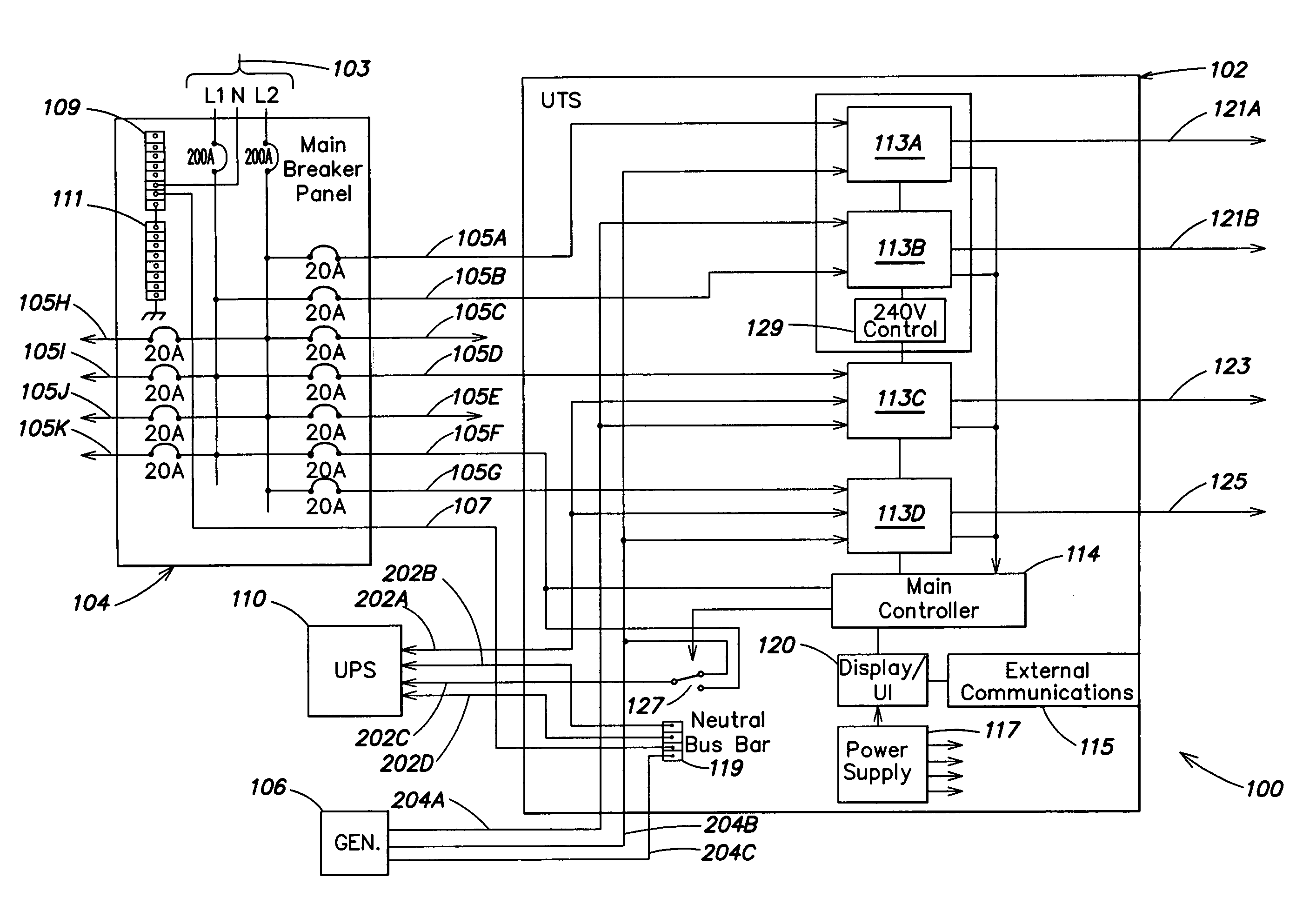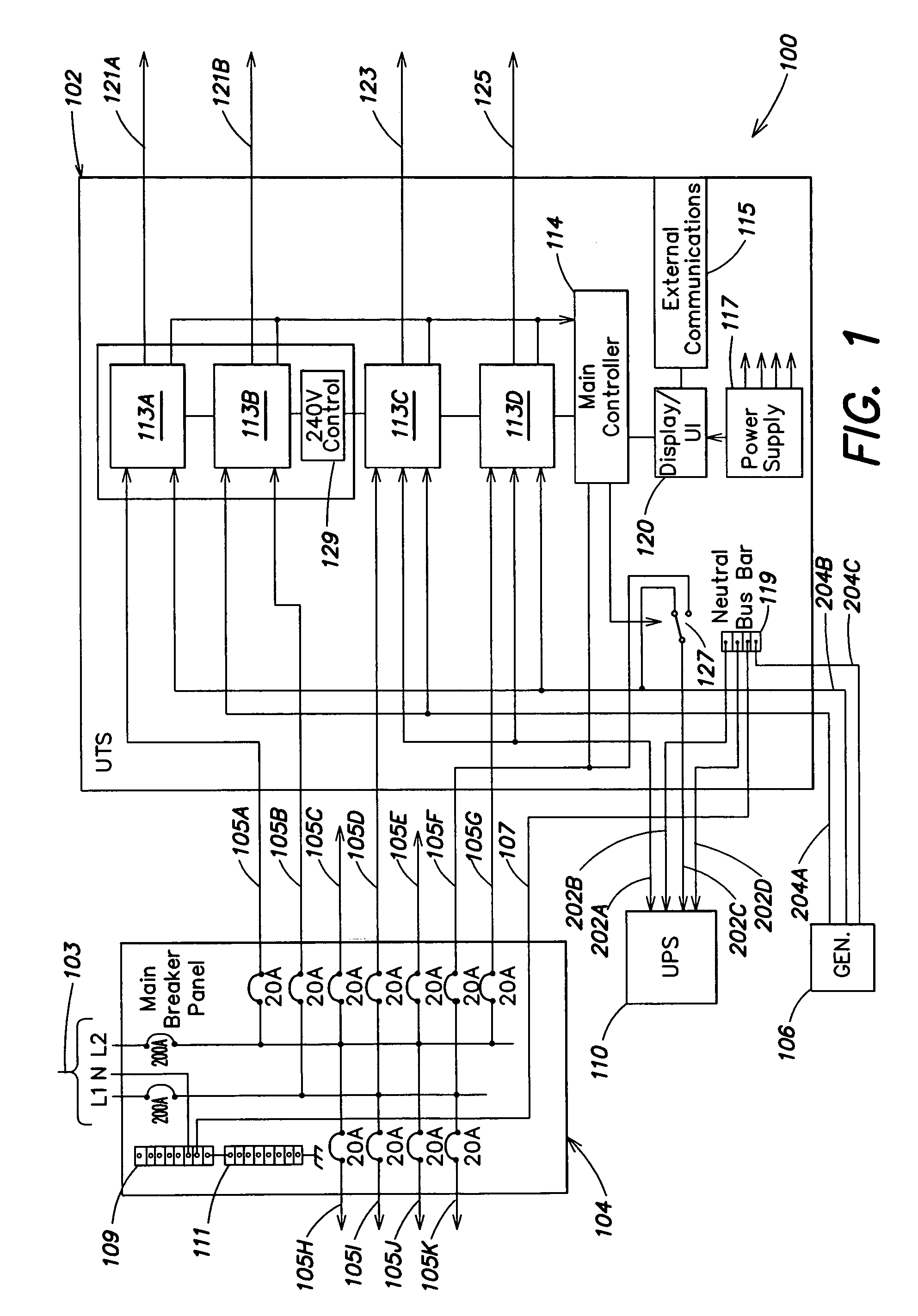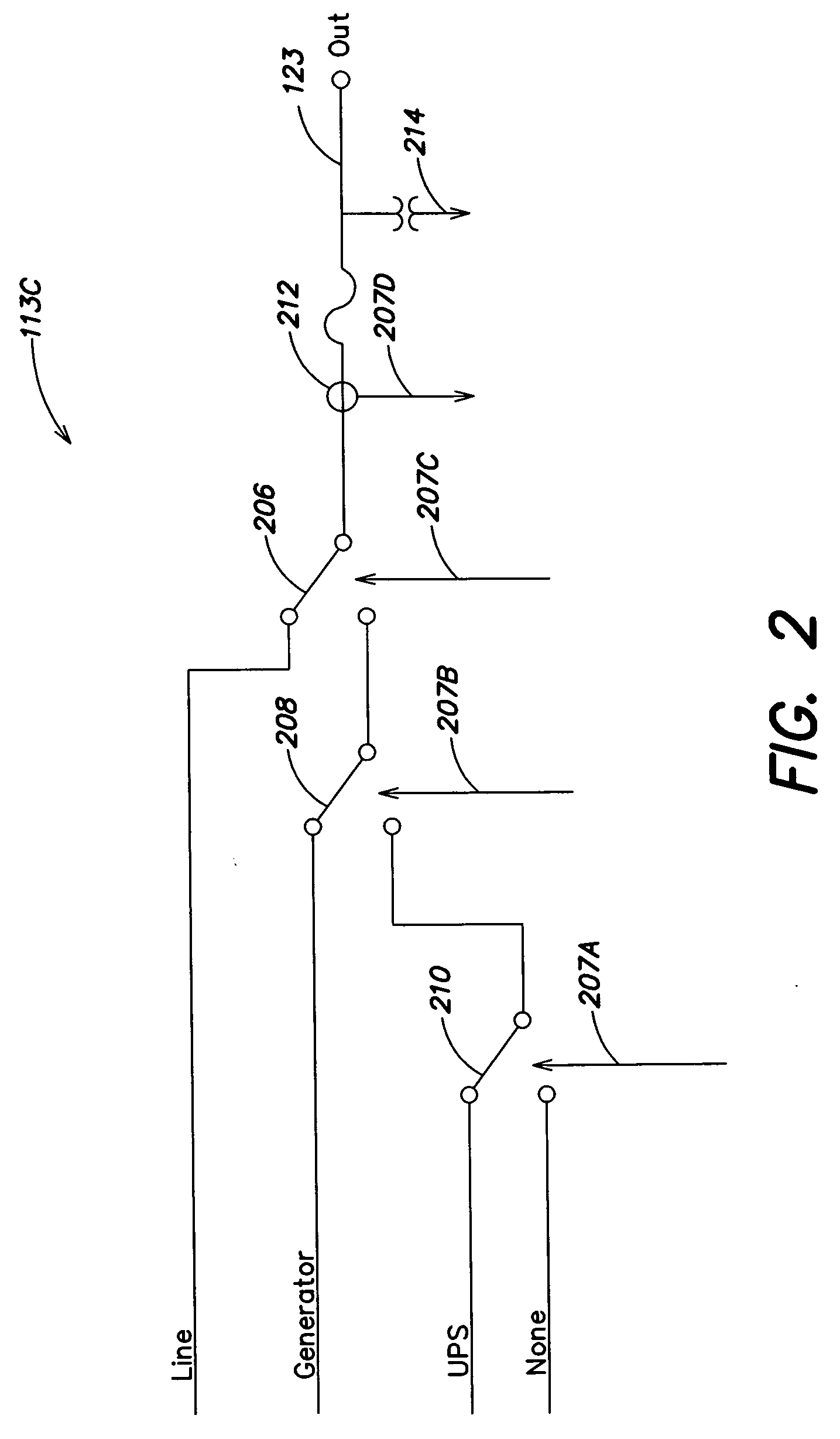System and method for allocating power to loads
a technology of power allocation and load, applied in the integration of power network operation systems, emergency power supply arrangements, transportation and packaging, etc., can solve the problems of generator stall, no load control or overload protection means, manual transfer switches also have no automatic means of controlling non-critical loads, etc., to maximize the use of available power and maximize power draw
- Summary
- Abstract
- Description
- Claims
- Application Information
AI Technical Summary
Benefits of technology
Problems solved by technology
Method used
Image
Examples
example 1
[0067] The source was loaded with 4490 W, consisting of a furnace, PC, refrigerator, microwave, and lights. The UTS recognizes that the load is beyond the continuous rating of the source and takes action. It measures the power being drawn by the two delayable loads as 1800 W by the furnace and 600 W by the refrigerator. The UTS disconnects power to the refrigerator, bringing the total load to 3890 W.
[0068] After a few minutes, the microwave turns off, decreasing the total load to 2390 W. The UTS recognizes the extra capacity available and reconnects the refrigerator, which raises the load to 3590 W.
example 2
[0069] The source was loaded with 4590 W, consisting of a furnace, PC, lights, and an operating garage door opener. The UTS recognizes that the load is beyond the continuous rating of the source and takes action. Since the furnace is the only delayable load currently drawing power, the UTS disconnects the furnace from the source. When the garage door opener completes its task, the load drops, so the UTS reconnects the furnace.
example 3
[0070] The source was loaded with 1190 W, consisting of a PC, refrigerator, and lights. The thermostat toggles on and activates the furnace. The inrush of the furnace creates a surge load of 6590 W. The UTS recognizes the surge rating of the source is being exceeded and takes action. It measures the power being drawn by the two delayable loads as 5400 W by the furnace (due to inrush) and 600 W by the refrigerator. The UTS disconnects power to the refrigerator, bringing the total load to 5990 W, within the surge rating of the generator.
[0071] Once the inrush requirement of the furnace is satisfied, the load settles to 2390 W. The UTS reconnects the refrigerator. The surge rating of the source handles the surge load of 4790 W. Once the inrush requirement of the refrigerator is satisfied, the load settles to 2990 W.
PUM
 Login to View More
Login to View More Abstract
Description
Claims
Application Information
 Login to View More
Login to View More - R&D
- Intellectual Property
- Life Sciences
- Materials
- Tech Scout
- Unparalleled Data Quality
- Higher Quality Content
- 60% Fewer Hallucinations
Browse by: Latest US Patents, China's latest patents, Technical Efficacy Thesaurus, Application Domain, Technology Topic, Popular Technical Reports.
© 2025 PatSnap. All rights reserved.Legal|Privacy policy|Modern Slavery Act Transparency Statement|Sitemap|About US| Contact US: help@patsnap.com



